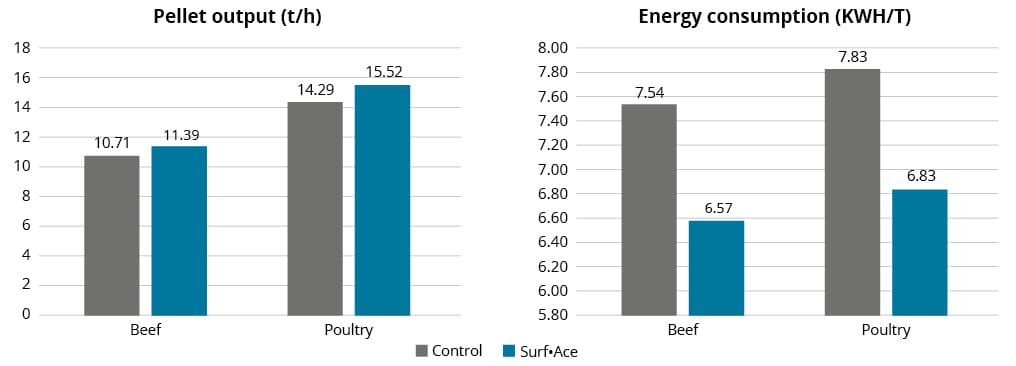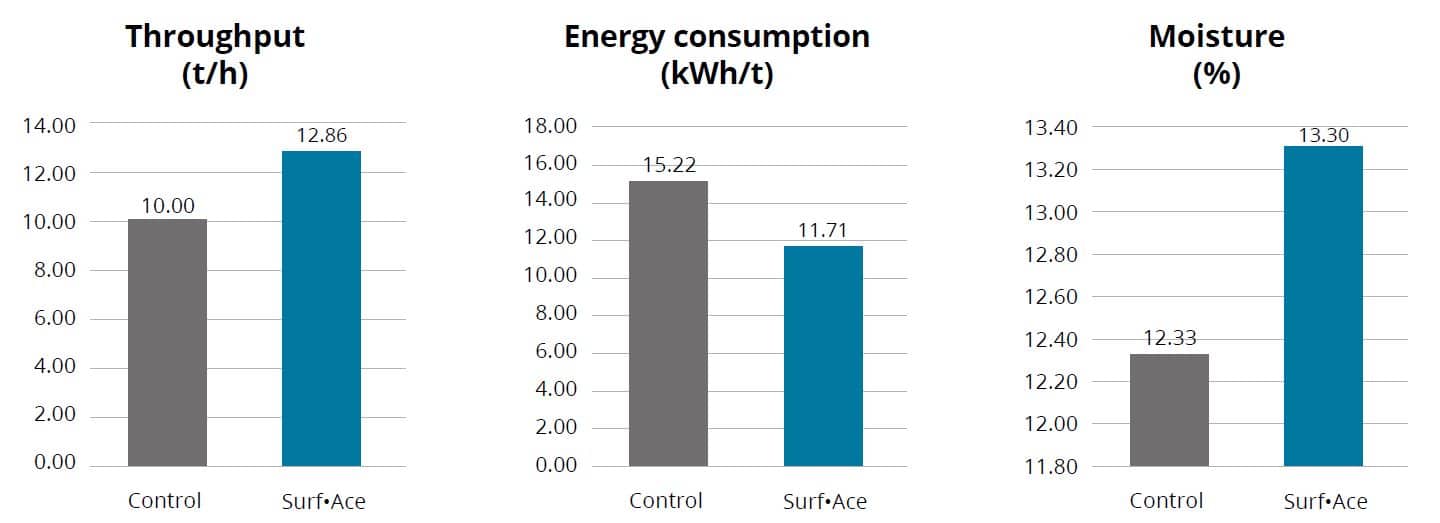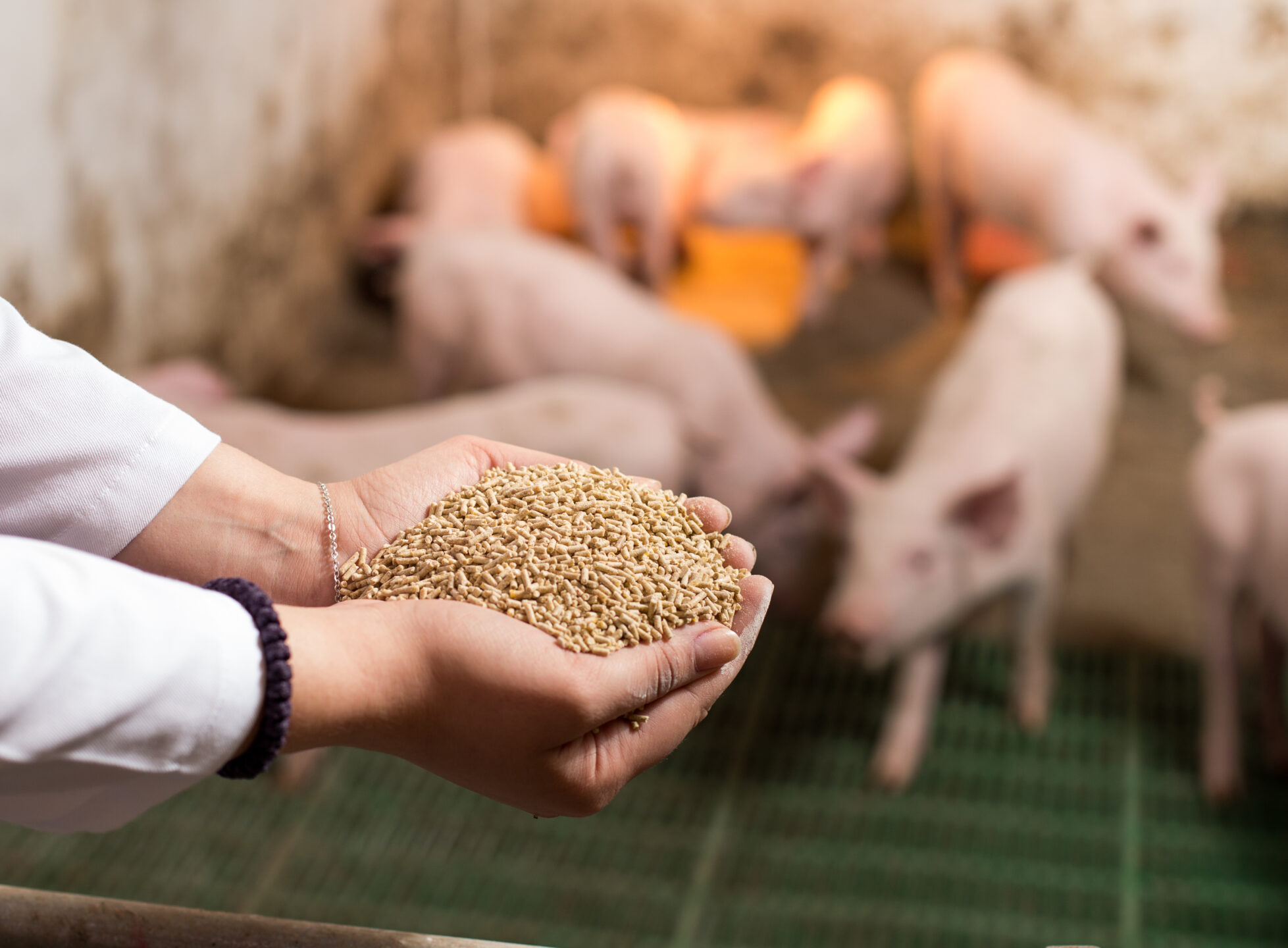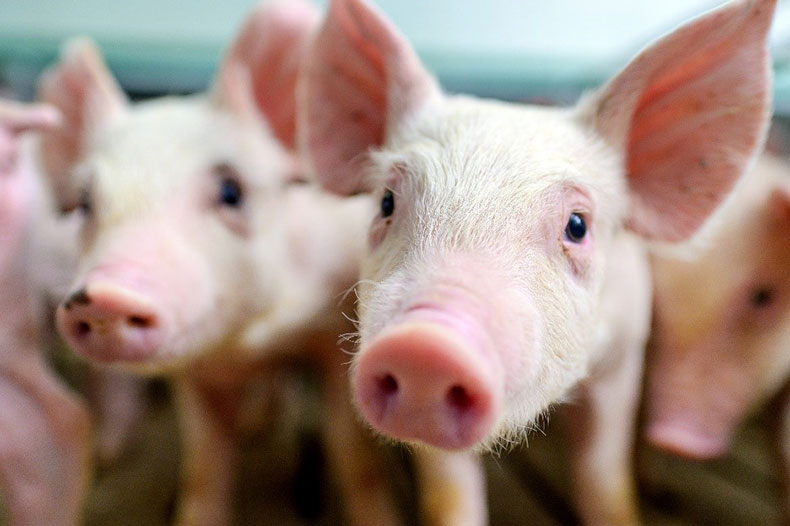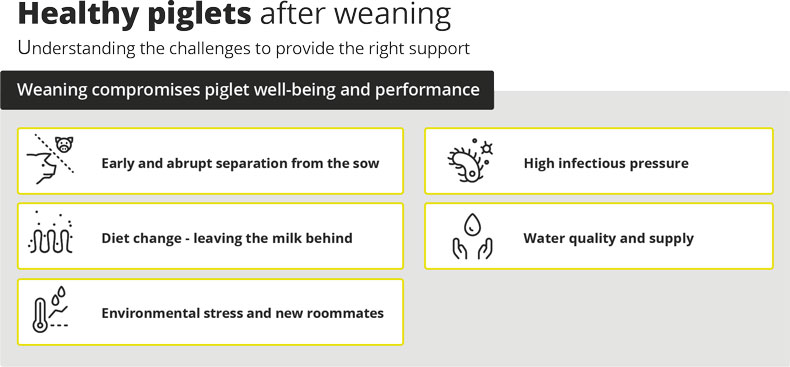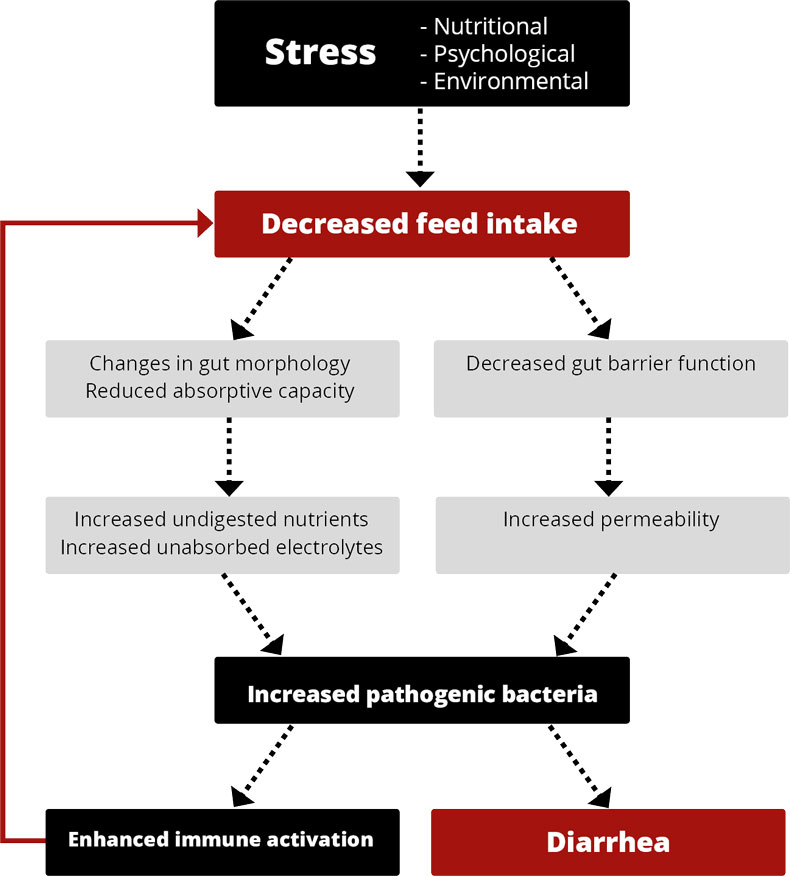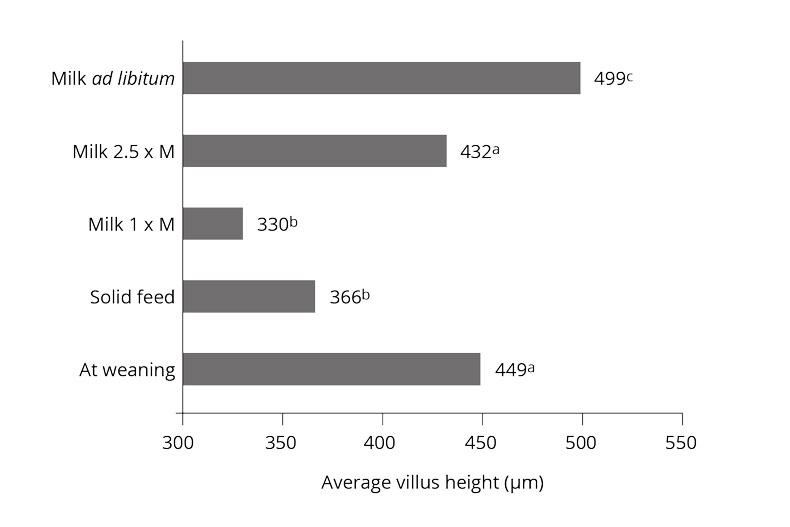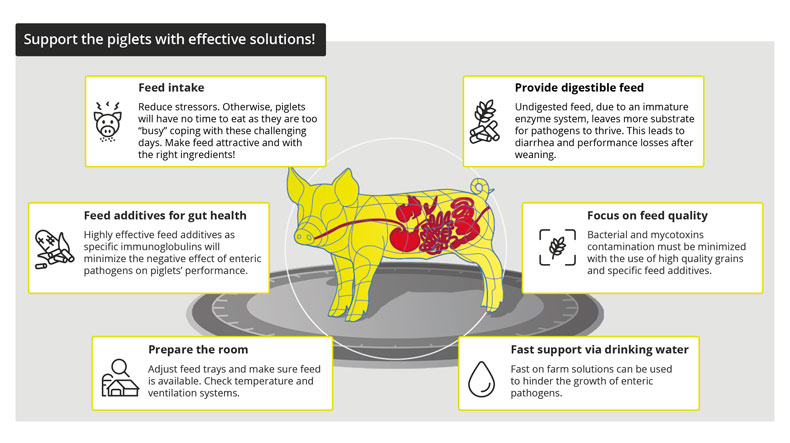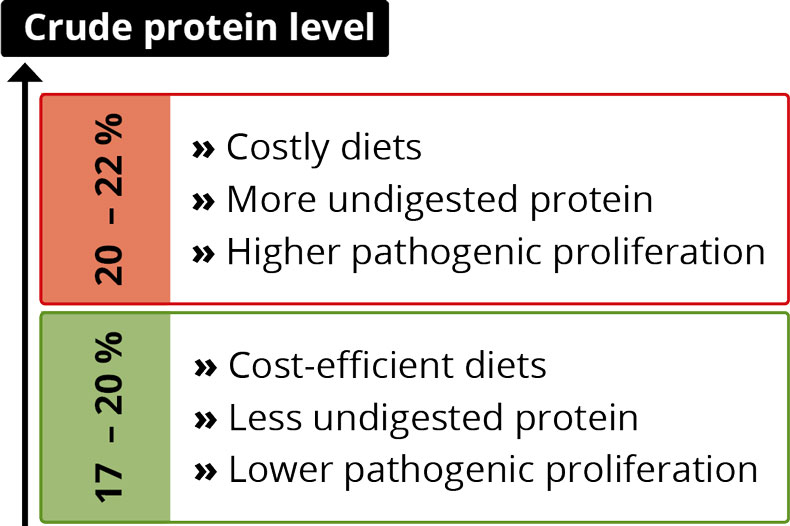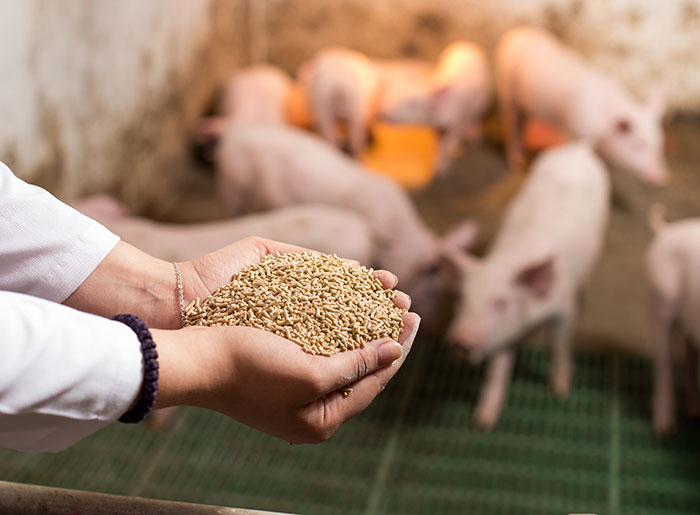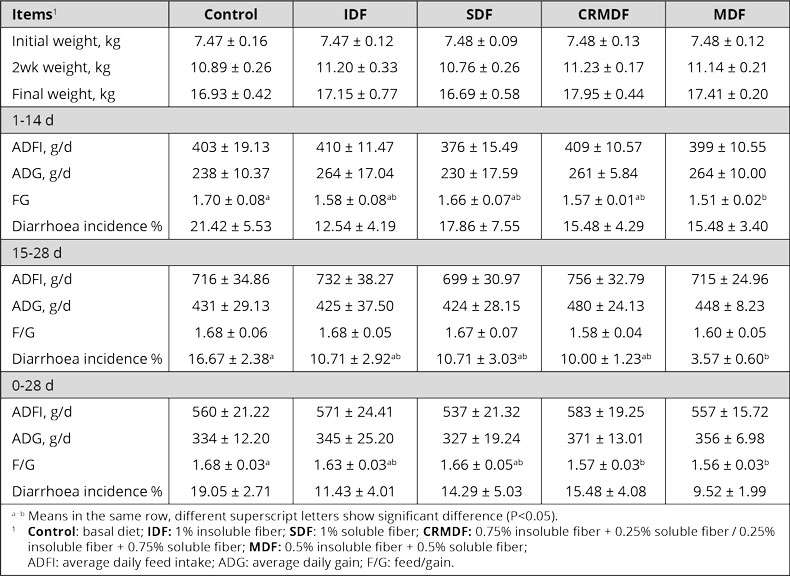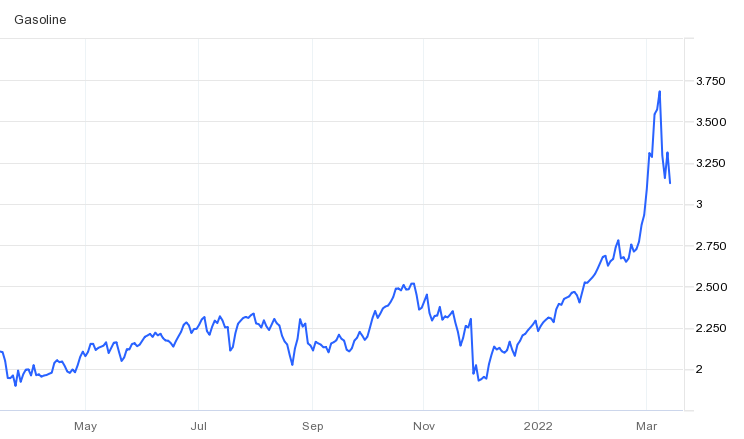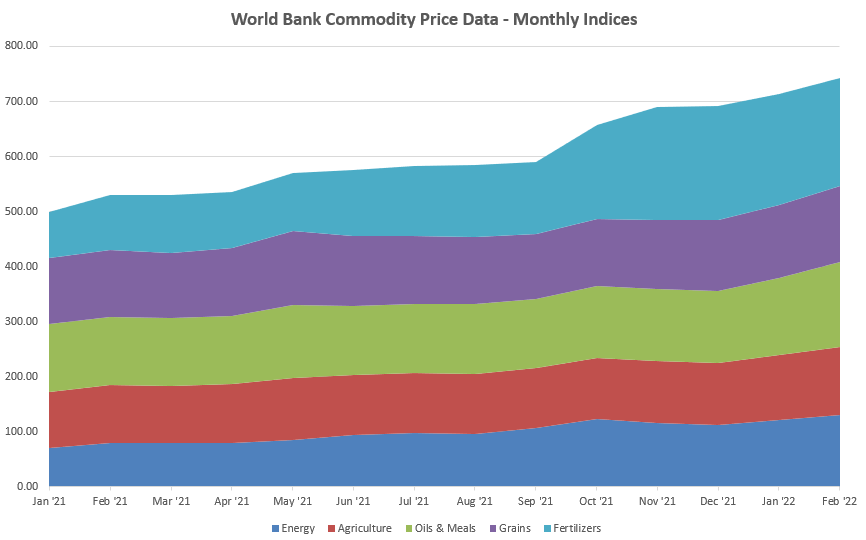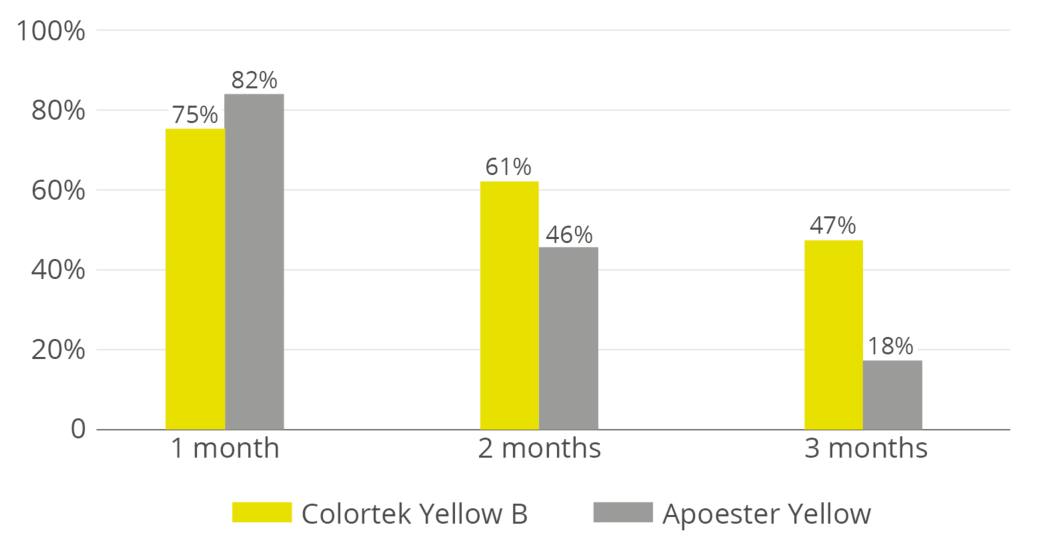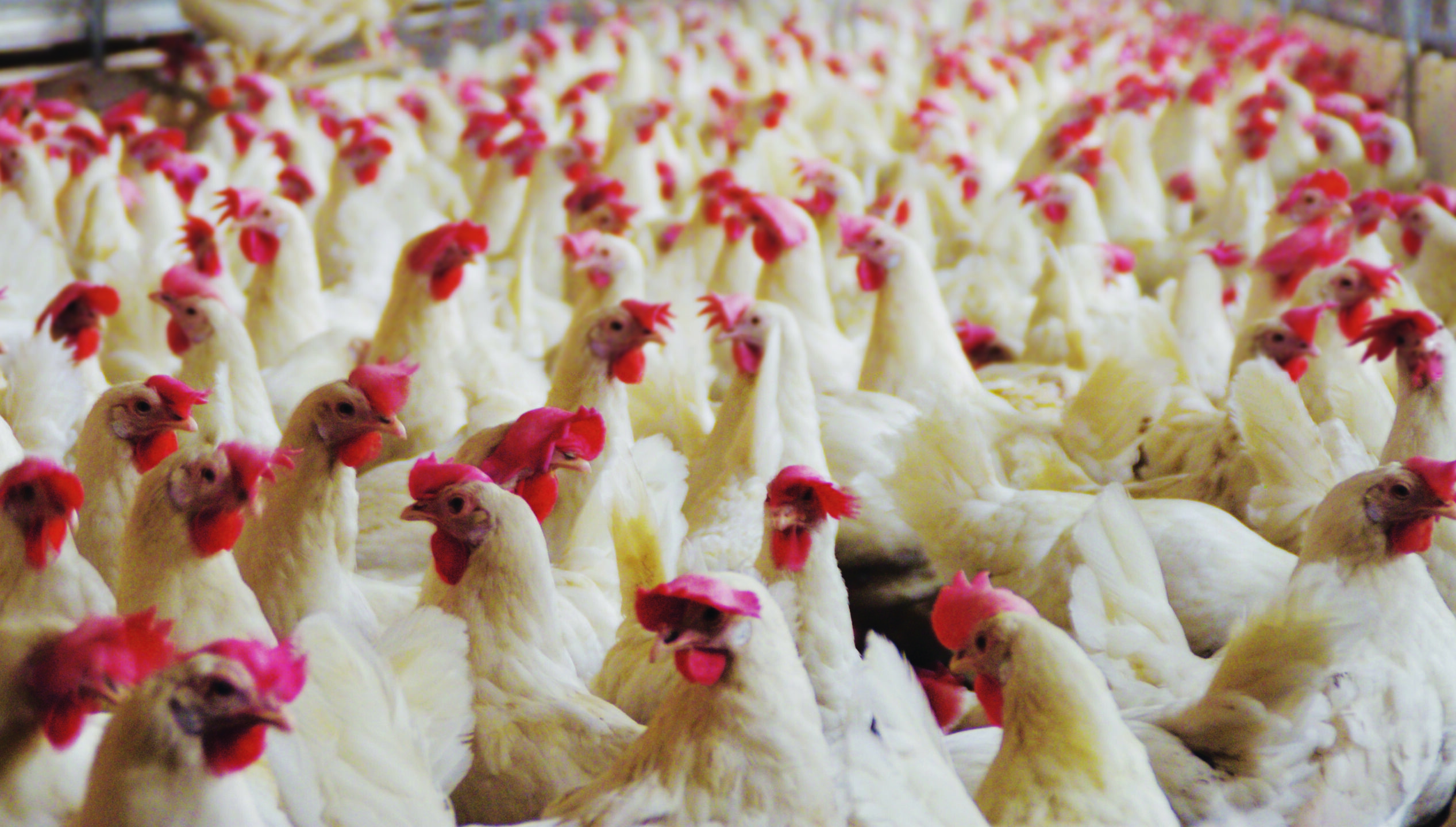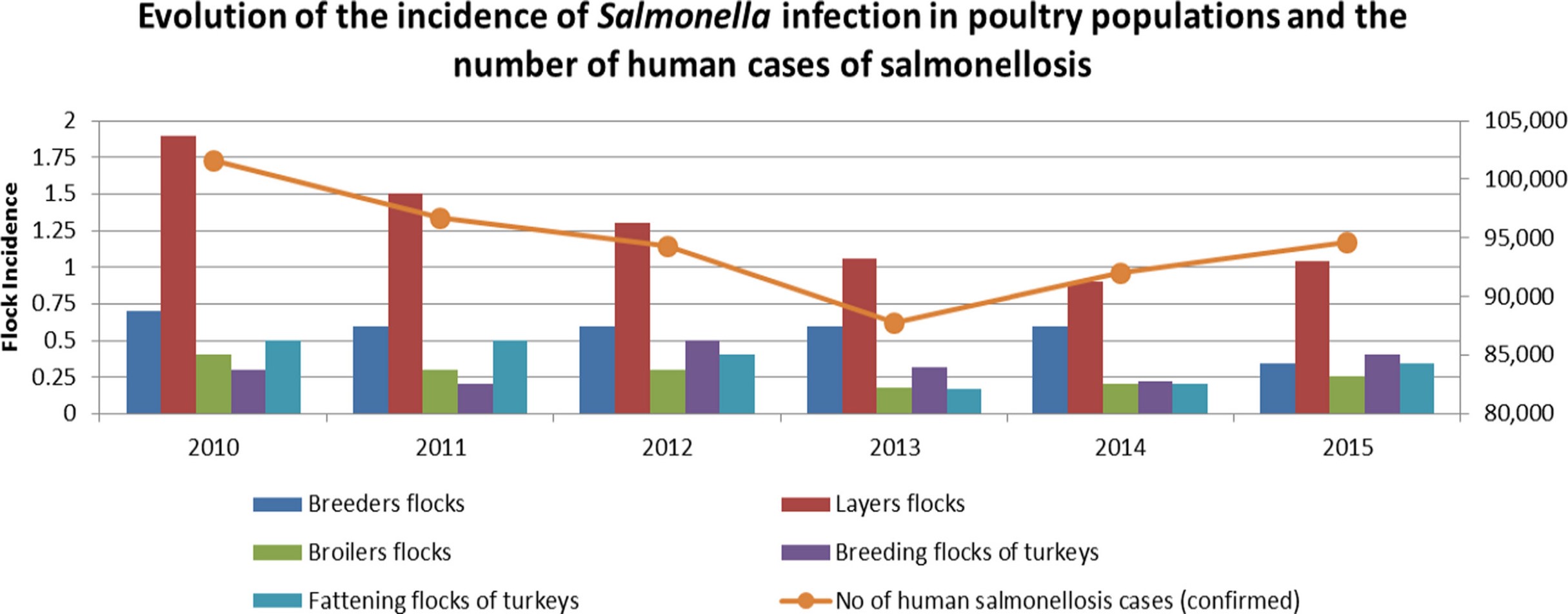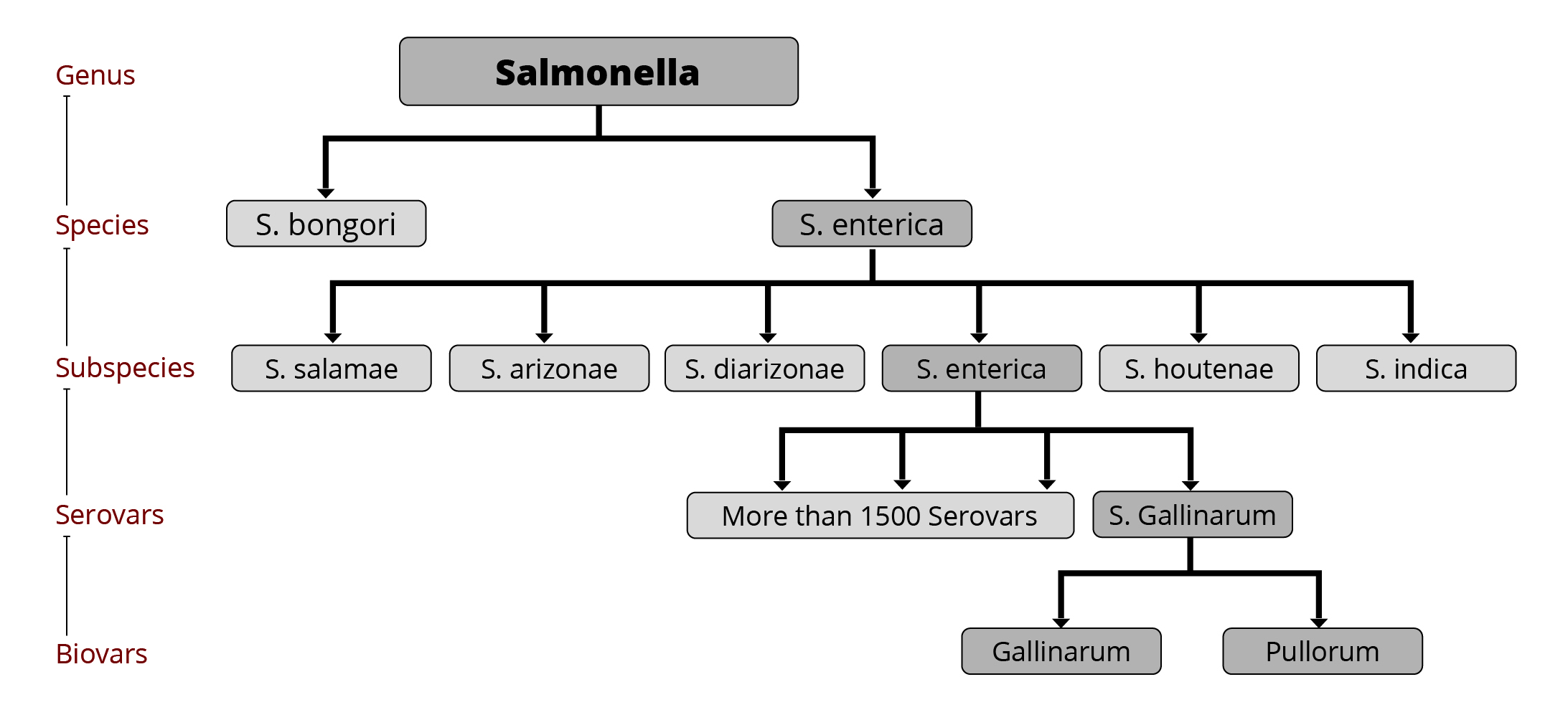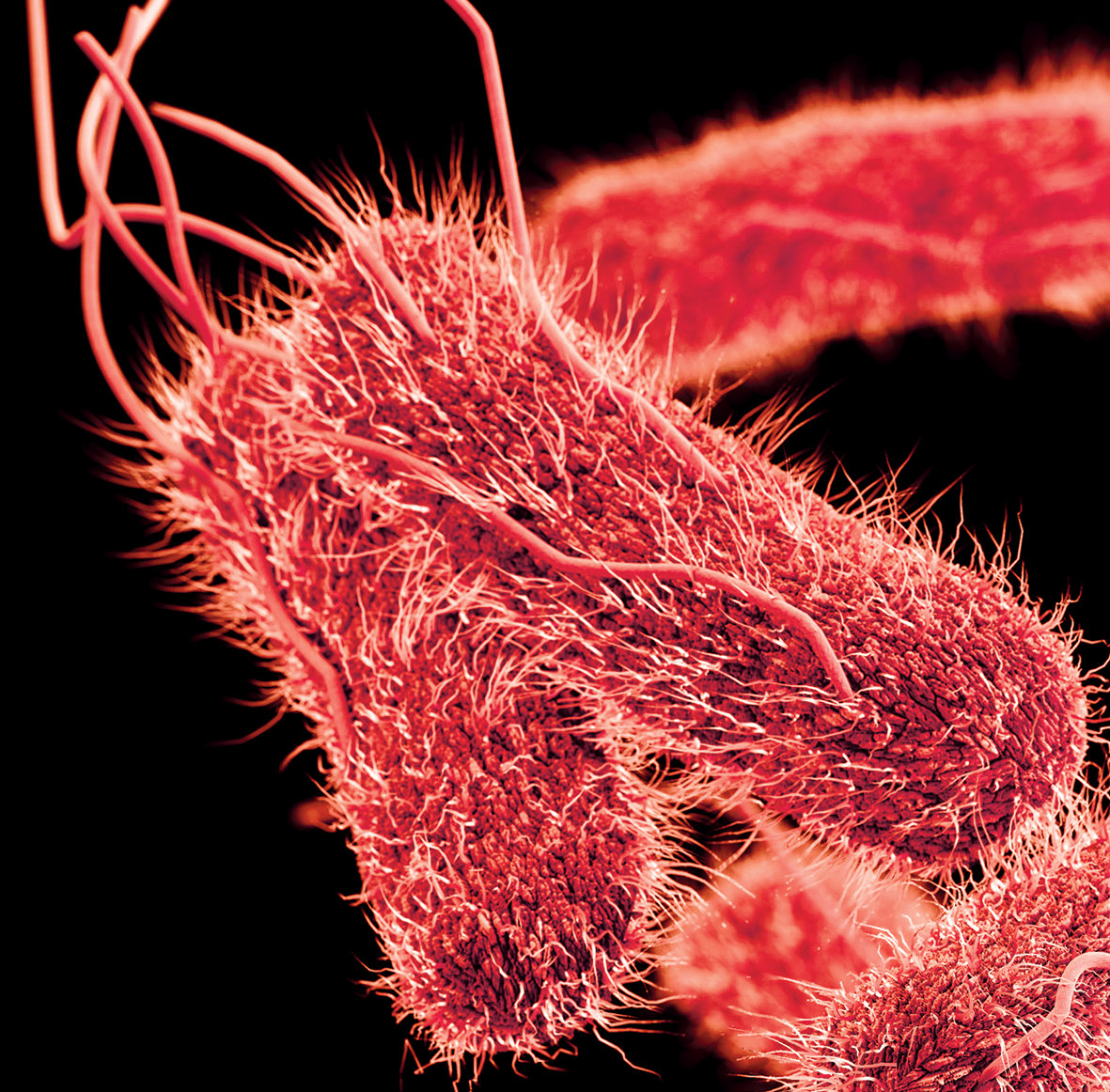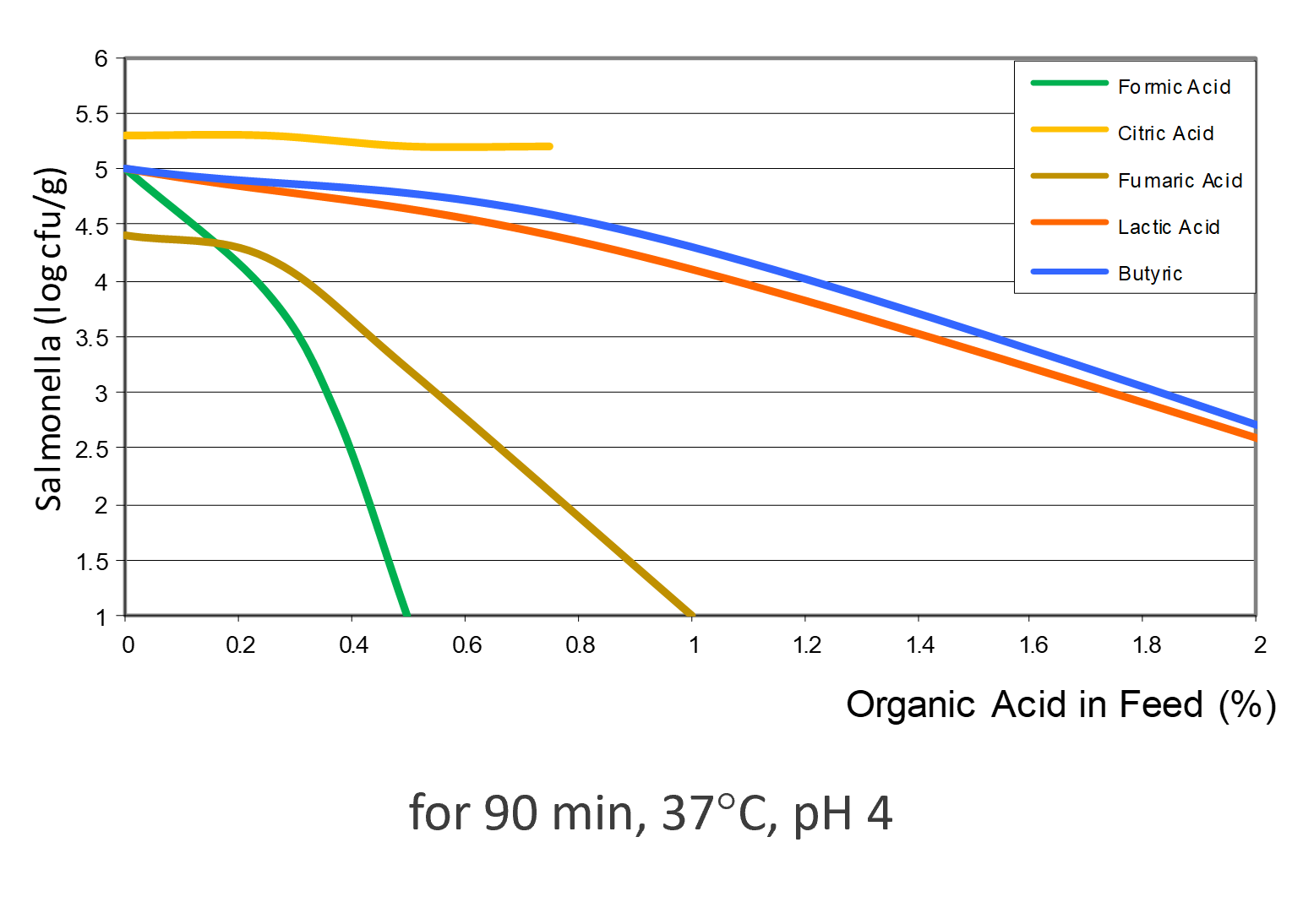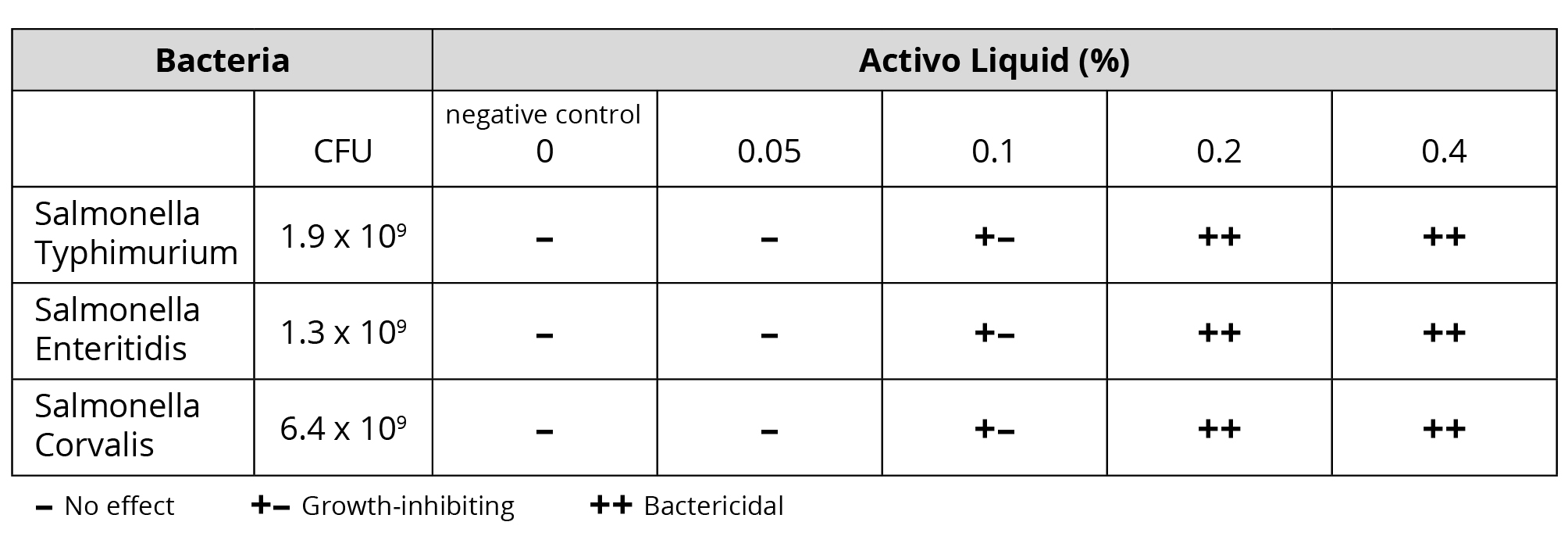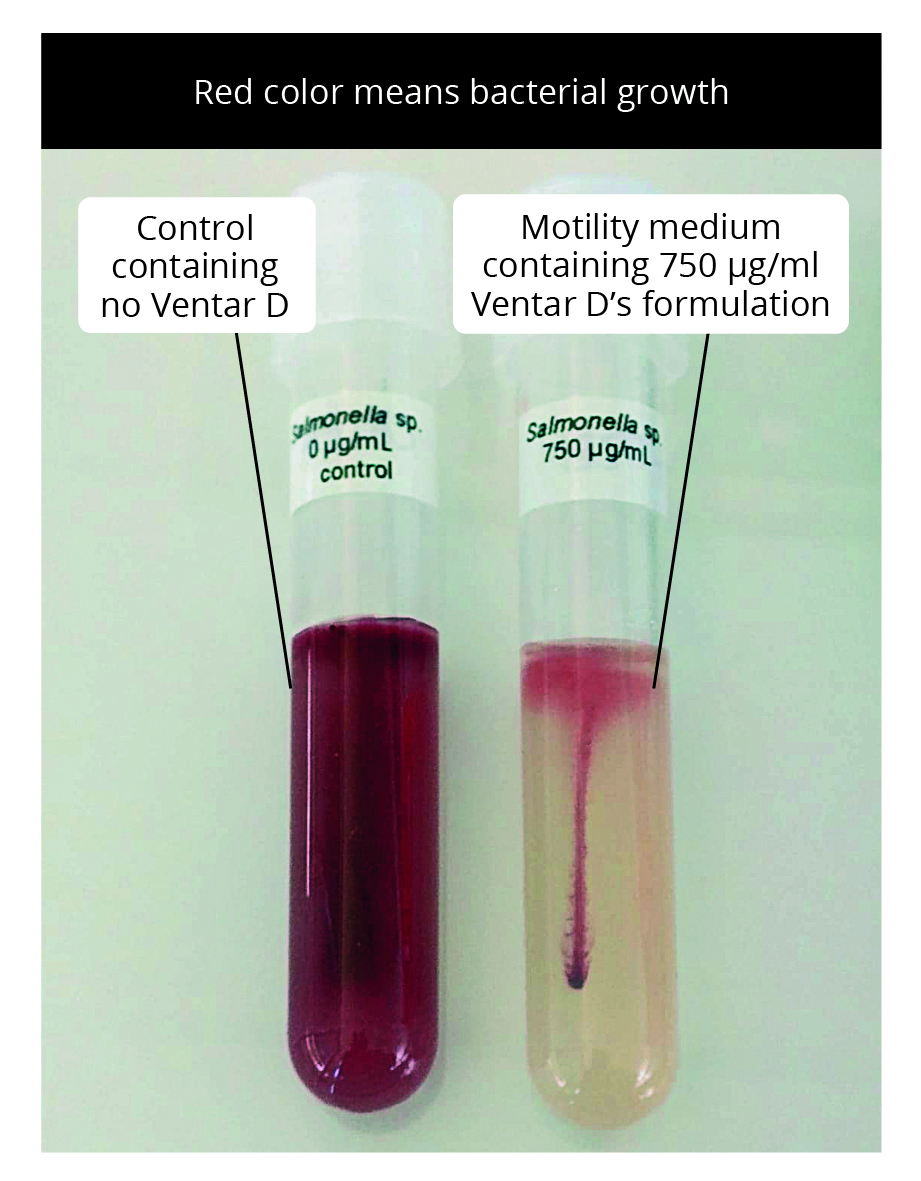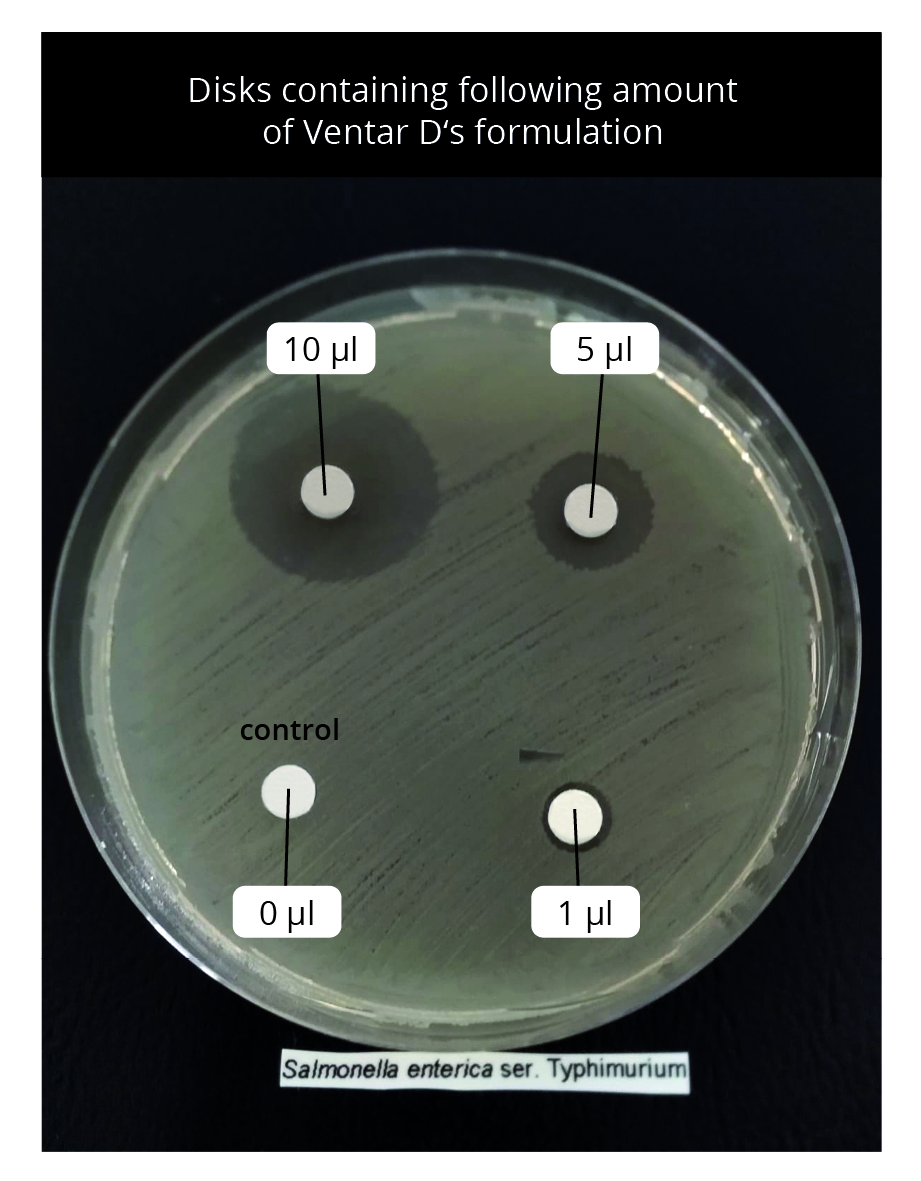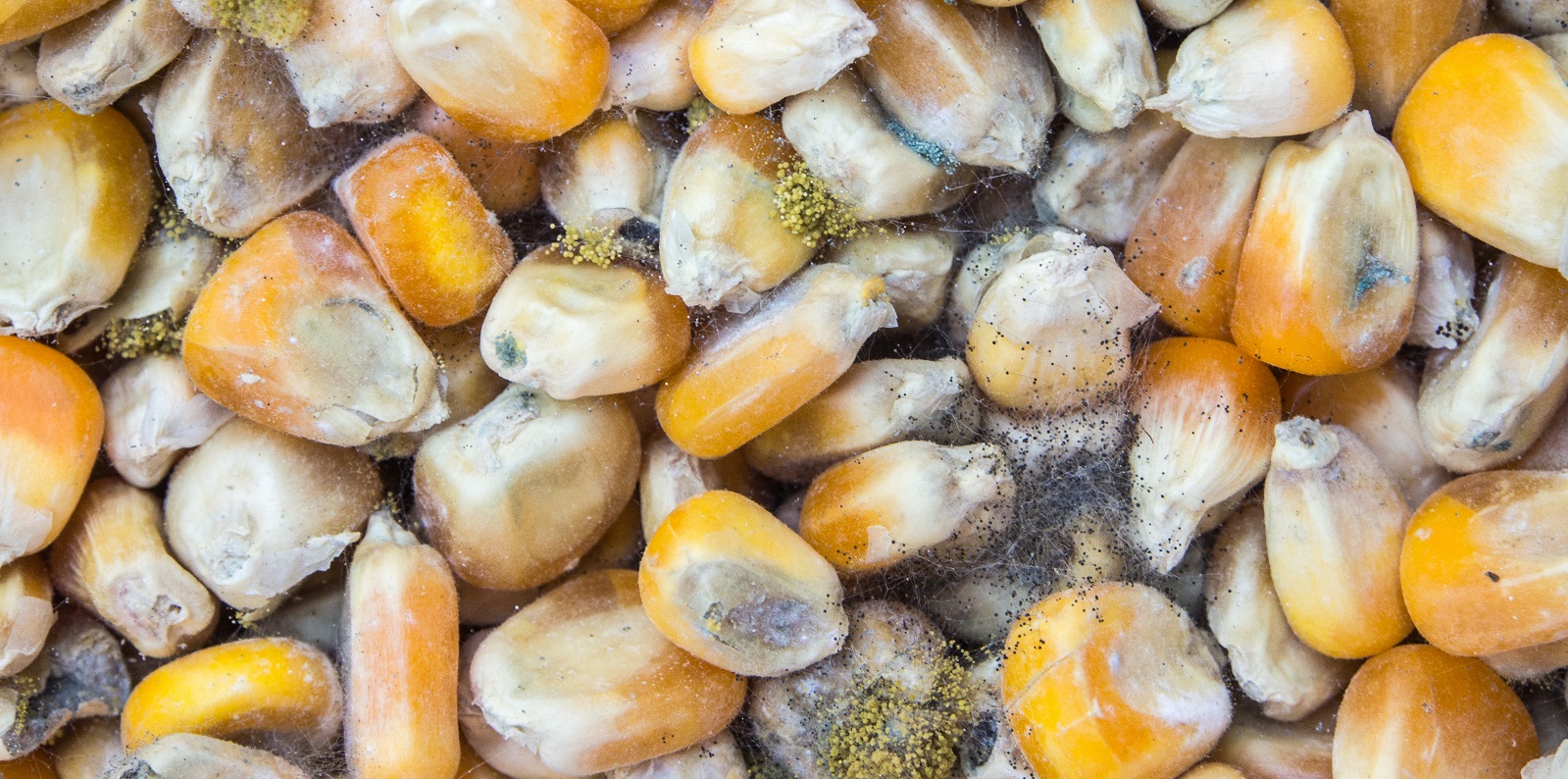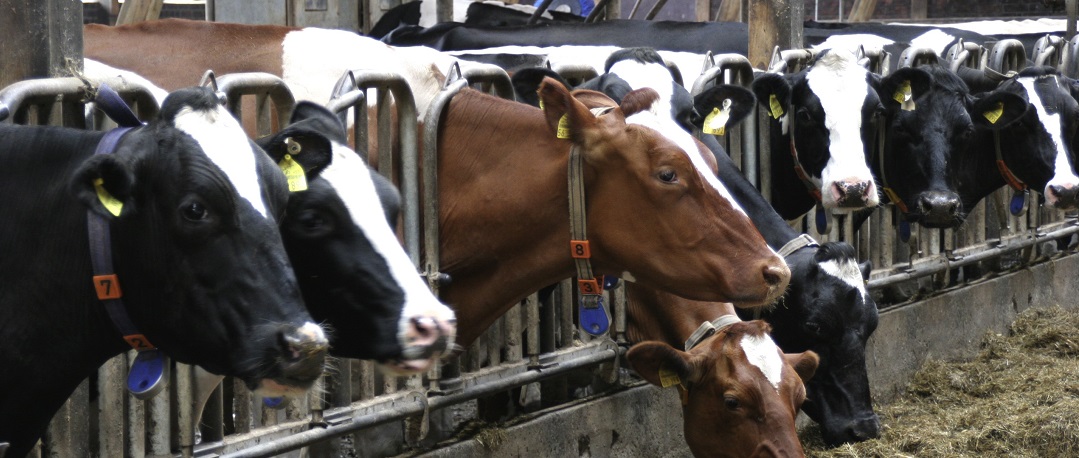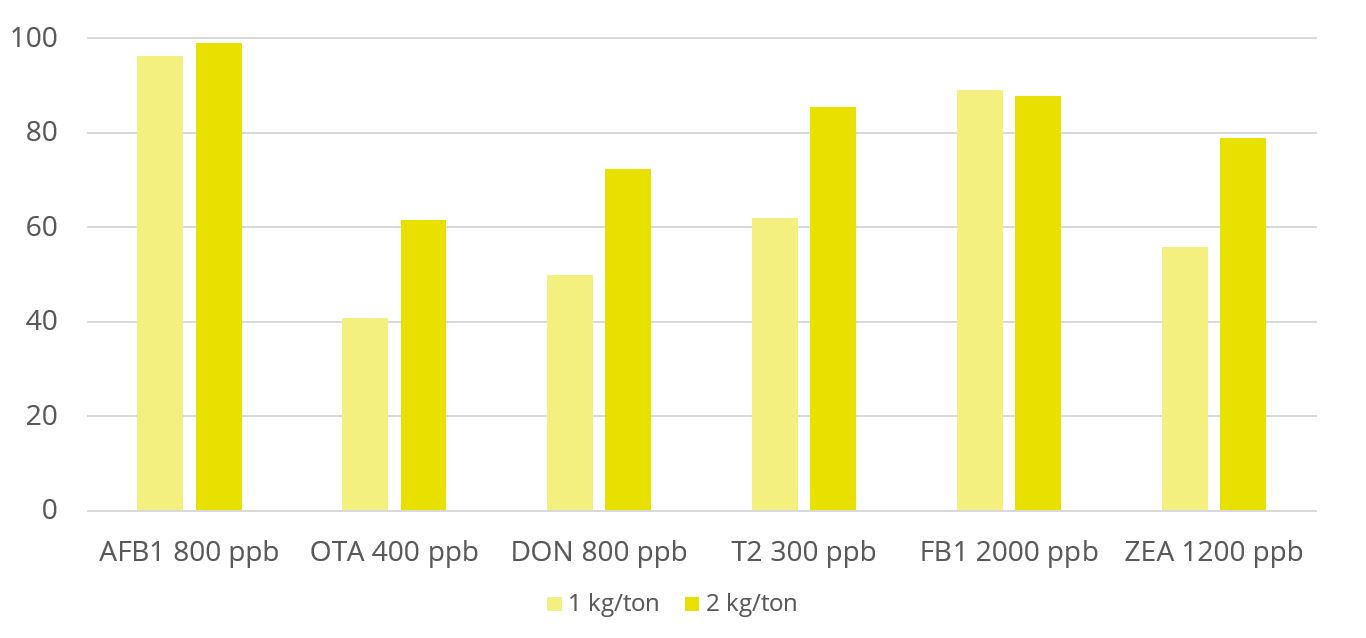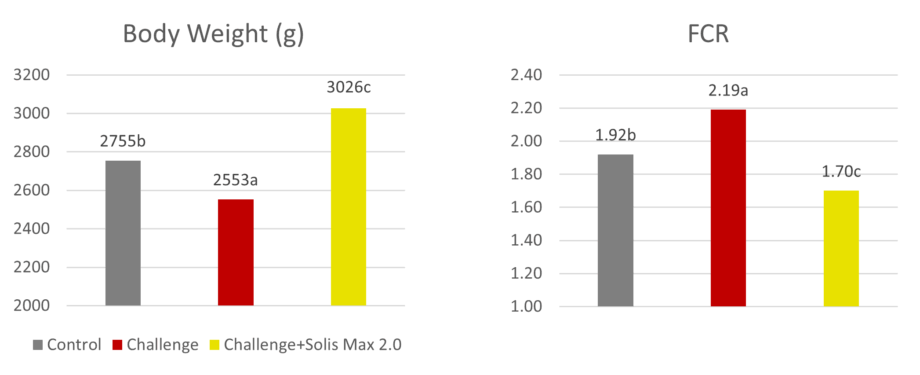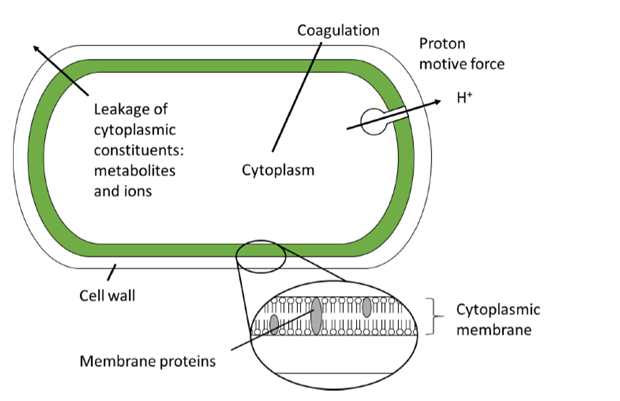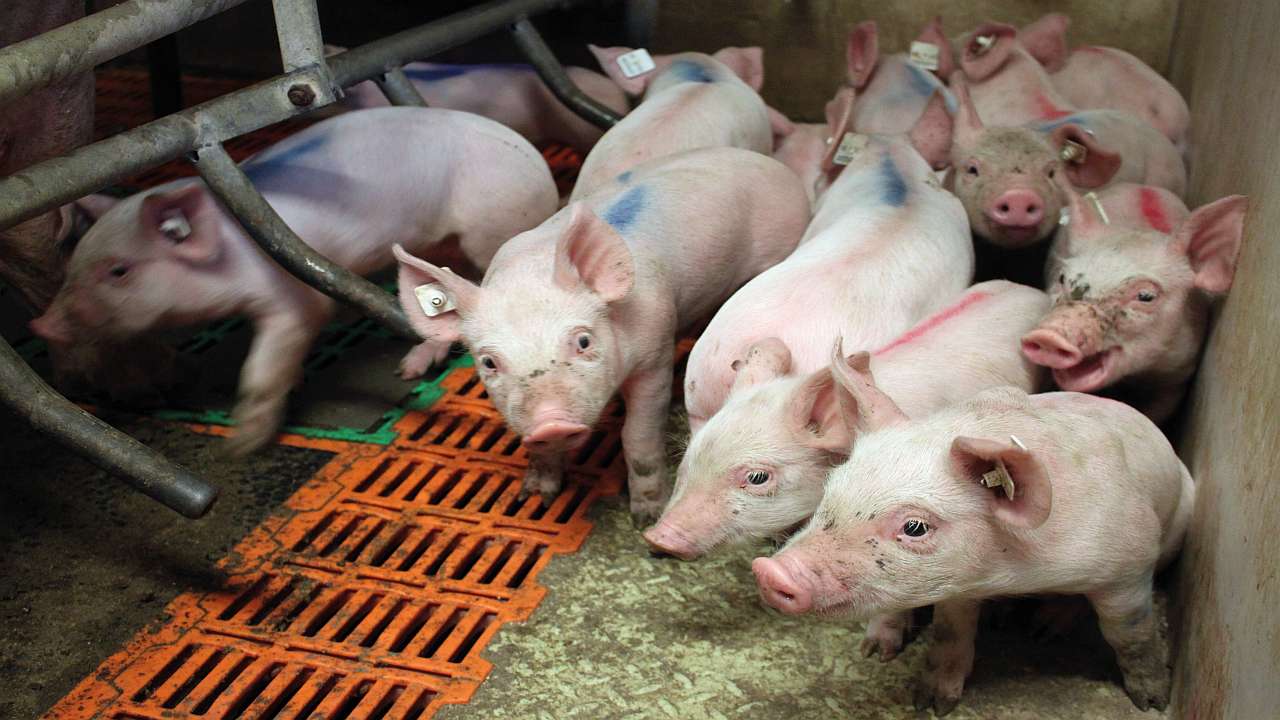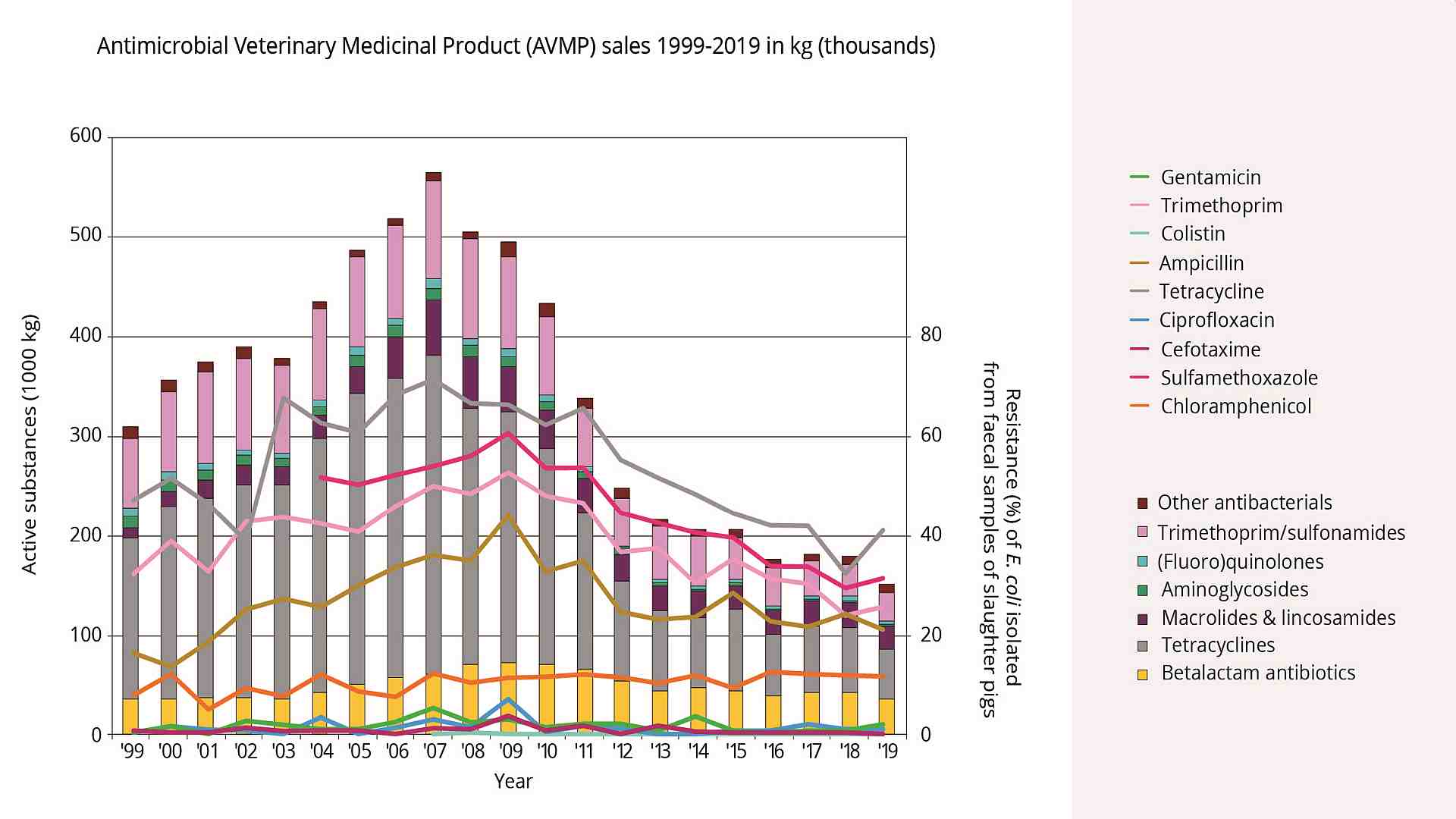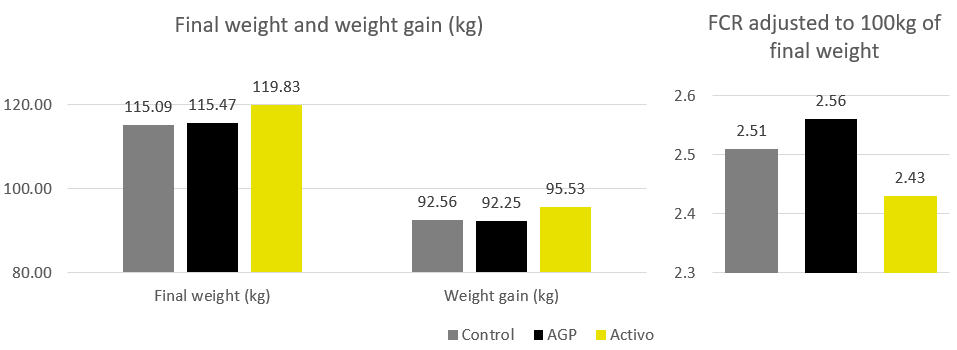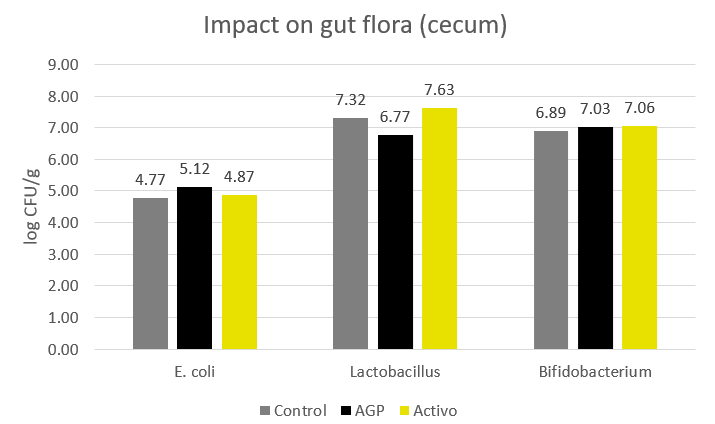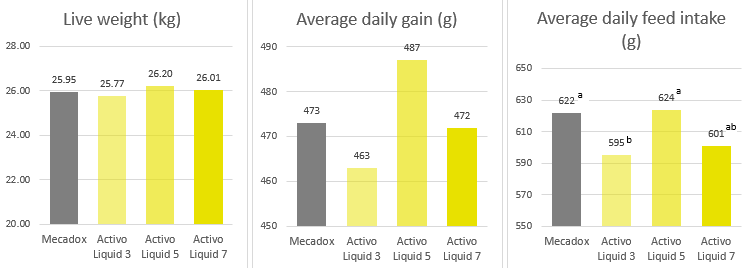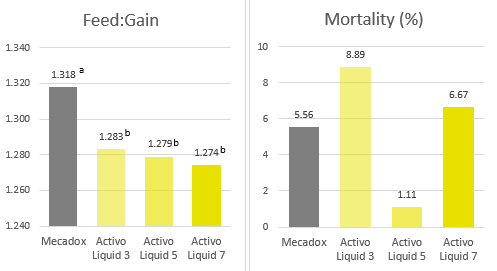Improve health and productivity in breeders with phytomolecules
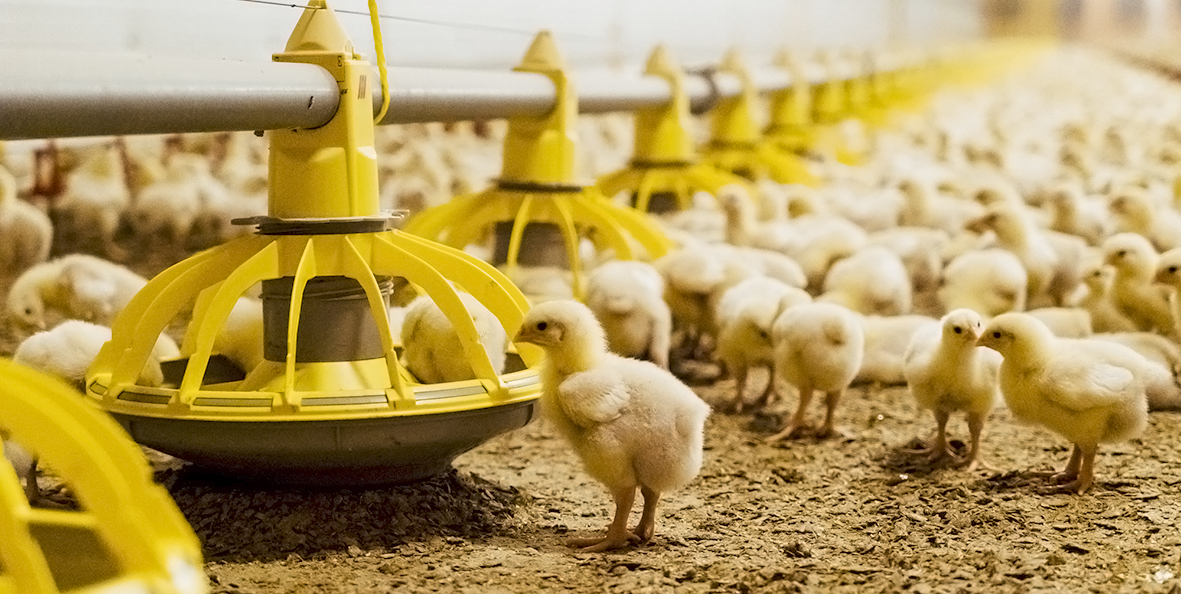
By Dr. Inge Heinzl, Editor, and Technical Team, EW Nutrition
Careful management of the breeders is a must to get their best reproductive efficiency. In today’s hatching egg production, factors such as stress, inflammation, body weight, and altered mating behavior lead to decreased performance, meaning fewer hatchable eggs and, therefore, fewer day-old chicks per hen (Grandhaye, 2020). The use of antibiotics to increase performance in farm animals is no longer allowed in many countries, and, since it may lead to the development of resistance, it is also not recommended. So, also in breeders, alternatives are requested to maintain animal health, welfare, and a high level of performance.
Optimal gut health is the cornerstone for breeder performance
As the organ responsible for digestion of the incoming feed, the absorption of nutrients, and the defense of the organism against pathogens or toxins, a healthy gut is a pre-condition for optimal performance (Shini and Bryden, 2021). A healthy gut, according to Bailey (2018), has optimally developed gut tissues, a well-functioning gut immune system, and well-balanced gut microbiota. It shows efficient functionality in terms of digestion and absorption and protects the organism against harmful agents.
The gut directly or indirectly provides the elements for egg production
Efficient feed digestion and absorption of nutrients are essential for the breeder hen to obtain the “material” for maintenance, growth, and egg production. Gut health is crucial since dysbacteriosis and diarrhea, characteristics of gut health challenges, increase dirty eggs, creating favorable conditions for pathogens to enter the egg and infect the embryo.
Egg yolks consist of water (70%), proteins (10%), and lipids (20%). The yolk lipids are lipoproteins rich in triglycerides, built up in the liver and transported to the ovary. Cholesterol carried via lipoproteins to the egg yolk is also built up there, thus showing the importance of the liver in egg production. The gut plays a crucial role in protecting the liver from damage, constituting a barrier against harmful pathogens and toxins, potentially passing into the bloodstream and reaching this vital organ.
Phytomolecules support performance in different ways
Phytomolecules, are an excellent tool to support gut health and animal performance. Phytomolecules are plant-derived secondary metabolites that exert insect-attracting or defensive functions in the plant. They are used in their natural but also nature-identical forms in humans and animals to exert their digestive, immune-modulating, antimicrobial effects.
Phytomolecules support gut health by balancing the gut microbiome
Diverse examples can be found in the scientific literature, where phytomolecules improve the gut microbiome, resulting in better performance of layer and breeder hens. This support happens in two ways:
-
Promoting beneficial bacteria
Rabelo-Ruiz and co-workers (2021), asserted that adding garlic and onion extracts to the diet of layers led to more eggs with a bigger size, accompanied by an increase in Lactococci in the ileum and Lactobacilli in the cecum. Another example is provided by Park et al. (2016). When supplementing the diet of layers with a fermented phytogenic feed additive, egg production and weight raised with increasing dosage of the additive, and a higher number of Lactobacilli could be observed in the cecum.
Phytomolecules can promote the growth of certain beneficial bacteria and therefore act like prebiotics. As these changes took place in the lower gut, they assumed an improved digestibility of the feed. -
Lowering pathogenic bacteria
In the study by Park et al. (2016) and in an in vitro study by Ghazanfari et al. (2019), E. coli in the cecum was reduced.
According to Burt (2007b), several essential oils / phytomolecules, amongst them, carvacrol, thymol, eugenol, and cinnamaldehyde, are effective against pathogens such as Listeria, Salmonella, E. coli, Shigella, and Staphylococcus. The hydrophobic essential oils can partition the lipids of the cell membranes. The resulting permeability of the membrane enables the leakage of cell content.
-
Changing virulence factors
Another mode of action is the change of virulence factors. Carvacrol, e.g., is known to decrease the motility of Campylobacter jejuni (Van Alphen et al., 2012); oregano and thyme oil reduced the motility of E. coli by inhibiting the synthesis of flagellin (Burt, 2007a). Vidanarachchi et al. (2005) mentioned that the hydrophobicity of microbes increases when some plant extracts are present, affecting their virulence characteristics. Also, the inhibition of defense measures such as efflux pumps in Gram-negative bacteria has been researched (Savoia, 2012).
Phytomolecules support gut health by improving digestion
For many years, phytomolecules have been studied and known for their digestive characteristics. In poultry and other animals, they influence feed digestion in two main ways.
-
Stimulating enzyme secretion
Platel and Srinivasan (2004) described different spices promoting not only the salivary flow, gastric juice and bile secretion but also the stimulation of the activity of enzymes such as pancreatic lipase, amylase, and proteases in rats. Hashemipour et al. (2013) saw the same effect in broilers supplemented with carvacrol and thymol in the diet. Research has also concluded on a higher nutrient digestibility: Hernandez et al. (2004) and Basmacioğlu Malayoğlu, 2010 noticed that supplementing plant extracts or essential oils improved apparent whole-tract and ileal digestibility of different nutrients.).
-
Maintaining gut integrity and enlarging the digestion area
An intact gut with a large area for digestion guarantees optimal utilization of nutrients. Different researchers found that adding plant extracts or essential oils (Khalaji et al., 2011; Ghazanfari et al., 2015; Chowdhury et al., 2018) promotes intestinal gut morphology, reflected in higher villi and deeper crypts, which might lead to higher nutrient absorption.
Concerning gut integrity, thymol and carvacrol showed protecting effects and mitigated gut lesions in broilers challenged with C. perfringens (Du et al., 2016). Probably, the lower pathogenic pressure due to the antimicrobial activity of phytogenic substances leads to minor damage to the gut wall and, in the end, to better absorption of the nutrients.
Phytomolecules mitigate the effects of stress
Environmental stress in breeders may decrease performance: the heat-stress-induced disruption of the tight junctions often leads to higher gut permeability, poor nutrient absorption, and higher electrolyte and water secretion (Abdelli, 2021). Sahin et al. (2010) achieved a linear improvement in egg production in quails when applying two doses of green tea catechin.
Cold-stressed layers also reacted positively to supplementation of oregano essential oil, improving egg production compared to a non-supplemented control (Migliorini, 2019).
Positive influence of phytomolecules results in higher performance
As described, phytomolecules improve gut health and support the animal in multiply ways, allowing better utilization of resources for growth and production. Literature provides many articles showing the promoting effects of these substances on the performance of layers or breeders, some of them summarized in Table 1.
Table 1: Benefits of phytomolecules in layers and breeders
| Compounds | Reference |
| Main effects: Improved egg weight, egg mass, and higher hen-day-egg production | |
| Oregano & thyme | Abdel-Wareth (2013) |
| Main effects: Higher fertility and hatchability | |
| Oregano, rosemary & thyme | Nadia (2008) |
| Main effects: Higher egg production, egg mass, better FCR | |
| Thyme, oregano, rosemary & curcuma | Nadia (2008) |
| Effects: improved laying performance | |
| Thyme | Bölükbaşi (2007) |
| Mint | Abdel-Wareth and Lohakare, 2014; Abdel-Wareth and Lohakare, 2020; |
| Menta & Geranium | Dilawar, 2021 |
| Peppermint & thyme | Akbari et al., 2016 |
| Black cumin | Abou-Elkhair et al., 2020; Khan et al., 2013 |
| Fennel | Abou-Elkhair et al., 2020 |
| Hot pepper | Abou-Elkhair et al., 2020; Al-Harthi, 2004 |
| Alliaceae | Rabelo-Ruiz et al., 2021; Abad, 2020 |
| Green tea | Al Harthi, 2004 |
| Tea polyphenols | Wang, 2018 |
| Tea-tree oil | Puvaca, 2020 |
In-feed and in-water phytomolecules-based products show efficacy
Much of the research done with phytomolecules focuses on essential oils (with variable inclusions of the active compounds or on single plant extracts. EW Nutrition is a research-driven company proposing phytomolecule-based solutions for the animal production industry. These products combine selected, synergistically acting phytomolecules to achieve optimal results.
EW Nutrition has tested the combined use of
- a microencapsulated blend of phytomolecules (Activo) for the feed and designed to maintain a good gut-health status during the whole life-cycle of the breeders, and
- Activo Liquid, a liquid combination of phytomolecules and organic acids, which is conveniently applied on the farm via the waterline.
1. Trial documents phytomolecules positively influencing microflora
A trial conducted at the University of Central Queensland (Australia) showed that phytomolecules enhance beneficial bacteria such as Lactobacilli and, on the other hand, repress harmful bacteria such as Clostridium perfringens.
For the trial, caecal microbiota of layers was used. They were grown with and without Activo Liquid in vitro, and the changes in microbiota were monitored.
Result: The in vitro study clearly shows that Activo Liquid increases the number of lactobacilli and decreases clostridia and Enterococcus sp.
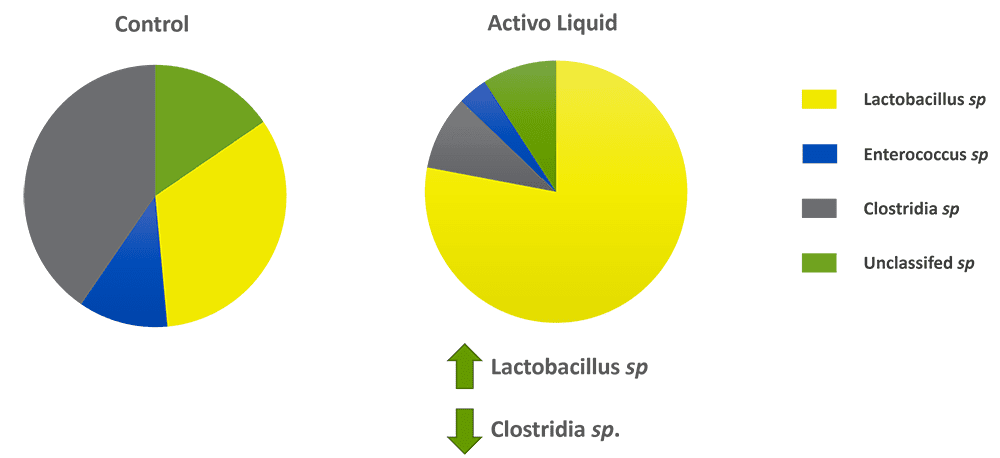
Figure 1: Shifting intestinal balance with phytomolecules
2.Three field trials with Activo Liquid showed an increased laying rate in breeders
Many operations started testing phytomolecules in a farm-application-based program to reaffirm the gut health-improving activity of phytomolecules in broiler breeder performance. Especially the flexibility of assisting animals through the water for drinking during stress periods makes phytomolecules an optimal tool to support gut health.
Two broiler breeder farms in Thailand (TH1 and TH2) and one grandparent farm in India (IN) are good examples of the effectiveness of phytomolecules. On each farm, the birds were always divided into two groups. Besides the standard management, feed, and water, one group got 200 ml Activo Liquid per 1,000 L of water. The periods when the birds received Activo in the water differed:
TH1 & TH2: 5 days per week, during weeks 24 – 32
IN: 5 days per week, every third week from weeks 18 to 24 and every fourth week from 28 to 36
The trials lasted for 9 weeks (Thailand 1 and 2) and 30 weeks (India).
The results are shown in figure 2. The animals supplemented with Activo Liquid showed an up to 4.4 % higher laying rate and up to three more hatchable eggs per hen housed.


Figure 2+3: Results of three trials conducted In Asia concerning laying rate and hatchable eggs
3. Customers tell about lower breeder mortality and more DOCs due to phytomolecules
The benefits of a tailored phytomolecule program have been demonstrated in several broiler breeder operations worldwide. For example, a combination of the in-feed (Activo) and the in-water solution (Activo Liquid) was tested in the Middle East. For the study, 75,000 23-weeks-old broiler breeders were divided into groups: 4 houses with the program, and 6 houses served as control (standard feed and water). The program, tailored to customer needs, was designed as follows:
AC+AL group:
- Activo 100 g/ton of feed during the whole trial (weeks 23-41) +
- Activo Liquid 250 ml/1000 L water, four days per week, weeks 23-30.
As a result, the peak and average laying rates were higher for the flocks with the program, and laying persistency was also higher. This allowed for a significant difference of 3 total and 3.5 hatching eggs/hen housed at week 41. In both cases, an increase equivalent to 5 % compared to the control group (figure 4) could be observed.

Figure 4: Total eggs and hatching eggs per hen housed
As fertility and hatchability were similar for both groups, the 5 % increase in hatching eggs resulted in a 5 % higher number of day-old chicks per hen housed (figure 5).
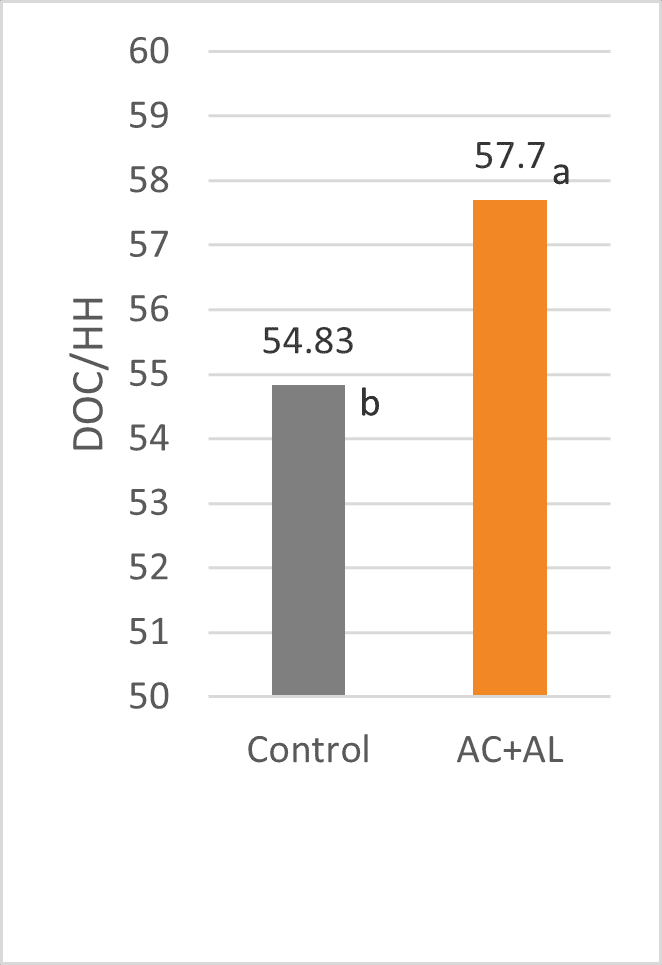
Figure 5: Number of DOSs per hen housed
It must be mentioned that during the trial period, at 28 weeks of age, an NDV outbreak was diagnosed on the farm, which negatively impacted the overall results. However, this impact was reduced in the groups receiving the phytomolecule-based products, which also was reflected in a lower mortality rate (figure 6).
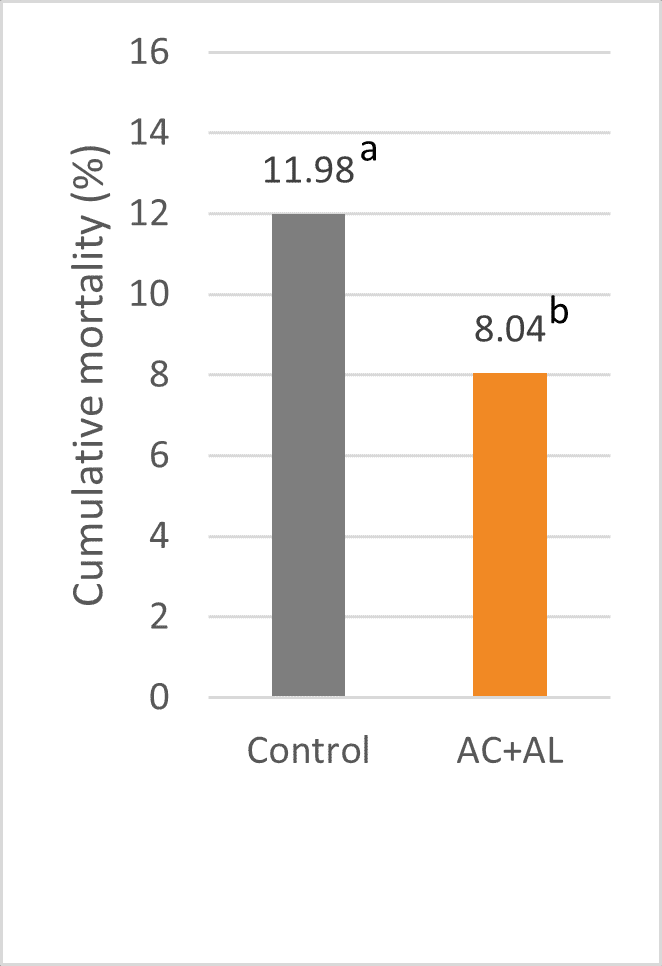
Figure 6: Cumulative mortality rate wk 41
4. Scientific trial shows that Activo can increase post-peak productivity in breeders
When thinking about the use of phytomolecules, most broiler breeder operations would like to consider scientific trial results in this type of animal. For EW Nutrition, it is crucial to accurately evaluate every product that reaches a market. Thus several scientific trials with broiler breeders have been performed. For one of them, Hubbard breeders (JA57 females with 80 M77 males) were divided into 2 treatments, having 5 replicate pens for each. The experiment started after the peak production period, at 34 weeks of age, and ended at week 62. To make the trial fair, the production data of 6 (pre-experimental) weeks was used to allocate the pens for each treatment, resulting in two (statistically) similar groups.
The control group was fed the standard mash diet. For the Activo group, 100g Activo/MT was added to the diet.

With Activo, breeders kept their high productivity after the peak, while the control group showed a steady decline from breed target values. During the experiment, Activo supplemented birds produced 3.6 more eggs than control birds (P=0.06) while consuming a similar amount of feed. As a result, a lower feed consumption per egg produced was achieved (169.9 vs. 173.6 g/egg, respectively).
As the dietary treatment did not influence hatchability, the 3.6 extra eggs resulted in 2.9 extra day-old chicks per hen during the post-peak period, showing a positive return.
Phytomolecules as gut health and performance promoters– antibiotics can be reduced!
With their gut health-promoting activity, phytomolecules support breeders to better utilize nutrients. They can be invested for maintenance and the production of hatchable eggs, obtaining good quality day-old chicks.
References
Abad, Paloma, Natalia Arroyo-Manzanares, Juan J. Ariza, Alberto Baños, and Ana M. García-Campaña. “Effect of Allium Extract Supplementation on Egg Quality, Productivity, and Intestinal Microbiota of Laying Hens.” Animals 11, no. 1 (2020): 41. https://doi.org/10.3390/ani11010041.
Abdel-Wareth, A.A.A., and J.D. Lohakare. “Effect of Dietary Supplementation of Peppermint on Performance, Egg Quality, and Serum Metabolic Profile of Hy-Line Brown Hens during the Late Laying Period.” Animal Feed Science and Technology 197 (2014): 114–20. https://doi.org/10.1016/j.anifeedsci.2014.07.007.
Abdel-Wareth, A.A.A., Z.S.H. Ismail, and K.-H. Südekum. “Effects of Thyme and Oregano on Performance and Egg Quality Characteristics of Laying Hens.” World’s Poultry Sci. Journal, Supplement, 69 (2013): 1–6.
Abdelli, Nedra, David Solà-Oriol, and José Francisco Pérez. “Phytogenic Feed Additives in Poultry: Achievements, Prospective and Challenges.” Animals 11, no. 12 (2021): 3471. https://doi.org/10.3390/ani11123471.
Abou-Elkhair, Reham, Shaimaa Selim, and Eman Hussein. “Effect of Supplementing Layer Hen Diet with Phytogenic Feed Additives on Laying Performance, Egg Quality, Egg Lipid Peroxidation and Blood Biochemical Constituents.” Animal Nutrition 4, no. 4 (2018): 394–400. https://doi.org/10.1016/j.aninu.2018.05.009.
Akbari, Mohsen, Mehran Torki, and Keyomars Kaviani. “Single and Combined Effects of Peppermint and Thyme Essential Oils on Productive Performance, Egg Quality Traits, and Blood Parameters of Laying Hens Reared under Cold Stress Condition (6.8 ± 3 °C).” International Journal of Biometeorology 60, no. 3 (2015): 447–54. https://doi.org/10.1007/s00484-015-1042-6.
Al-Harthi, M.A. “Responses of Laying Hens to Different Levels of Amoxicillin, Hot Pepper or Green Tea and Their Effects on Productive Performance, Egg Quality and Chemical Composition of Yolk and Blood Plasma Constituents.” Egypt. Poult. Sci. 24, no. IV (2004): 845–68.
Al-Yasiry, A.R.M., B. Kiczorowska, W. Samolińska, E. Kowalczuk-Vasilev, and D. Kowalczyk-Pecka. “The Effect of Boswellia Serrata Resin Diet Supplementation on Production, Hematological, Biochemical and Immunological Parameters in Broiler Chickens.” Animal 11, no. 11 (2017): 1890–98. https://doi.org/10.1017/s1751731117000817.
Ali, Akhtar, Eric N. Ponnampalam, Gamini Pushpakumara, Jeremy J. Cottrell, Hafiz A. Suleria, and Frank R. Dunshea. “Cinnamon: A Natural Feed Additive for Poultry Health and Production—a Review.” Animals 11, no. 7 (2021): 2026. https://doi.org/10.3390/ani11072026.
Bailey, Richard. “Maintaining Gut Health without Antibiotics.” Poultry World, April 19, 2021. https://www.poultryworld.net/health-nutrition/maintaining-gut-health-without-antibiotics/.
Basmacioğlu Malayoğlu, H., Ş. Baysal, Z. Misirlioğlu, M. Polat, H. Yilmaz, and N. Turan. “Effects of Oregano Essential Oil with or without Feed Enzymes on Growth Performance, Digestive Enzyme, Nutrient Digestibility, Lipid Metabolism and Immune Response of Broilers Fed on Wheat–Soybean Meal Diets.” British Poultry Science 51, no. 1 (2010): 67–80. https://doi.org/10.1080/00071660903573702.
Burt, Sara A., Ruurd van der Zee, Ad P. Koets, Anko M. de Graaff, Frans van Knapen, Wim Gaastra, Henk P. Haagsman, and Edwin J. Veldhuizen. “Carvacrol Induces Heat Shock Protein 60 and Inhibits Synthesis of Flagellin in Escherichia Coli O157:H7.” Applied and Environmental Microbiology 73, no. 14 (2007a): 4484–90. https://doi.org/10.1128/aem.00340-07.
Burt, Sara Ann. “Antibacterial Activity of Essential Oils: Potential Applications in Food.” Thesis, S. Burt, 2007b.
Bölükbasi, S. Canan, and M. Kuddusi Erhan. “Effect of Dietary Thyme (Thymus Vulgaris) on Laying Hens Performance and Escherichia Coli (E. Coli) Concentration in Feces.” International Journal of Natural and Engineering Sciences 1, no. 2 (2007): 55–58.
Chowdhury, Subrata, Guru Prasad Mandal, Amlan Kumar Patra, Pawan Kumar, Indranil Samanta, Saktipada Pradhan, and Arup Kumar Samanta. “Different Essential Oils in Diets of Broiler Chickens: 2. Gut Microbes and Morphology, Immune Response, and Some Blood Profile and Antioxidant Enzymes.” Animal Feed Science and Technology 236 (2018): 39–47. https://doi.org/10.1016/j.anifeedsci.2017.12.003.
Dilawar, Muhammad Ammar, Hong Seok Mun, Dhanushka Rathnayake, Eun Ju Yang, Ye Seul Seo, Hyeoung Seog Park, and Chul Ju Yang. “Egg Quality Parameters, Production Performance and Immunity of Laying Hens Supplemented with Plant Extracts.” Animals 11, no. 4 (2021): 975. https://doi.org/10.3390/ani11040975.
Du, Encun, Weiwei Wang, Liping Gan, Zhui Li, Shuangshuang Guo, and Yuming Guo. “Effects of Thymol and Carvacrol Supplementation on Intestinal Integrity and Immune Responses of Broiler Chickens Challenged with Clostridium Perfringens.” Journal of Animal Science and Biotechnology 7, no. 1 (2016). https://doi.org/10.1186/s40104-016-0079-7.
Franciosini, Maria Pia, Patrizia Casagrande-Proietti, Claudio Forte, Daniela Beghelli, Gabriele Acuti, Dario Zanichelli, Alessandro dal Bosco, Cesare Castellini, and Massimo Trabalza-Marinucci. “Effects of Oregano (Origanum Vulgarel.) and Rosemary (Rosmarinus Officinalis l.)Aqueous Extracts on Broiler Performance, Immune Function and Intestinal Microbial Population.” Journal of Applied Animal Research 44, no. 1 (2015): 474–79. https://doi.org/10.1080/09712119.2015.1091322.
Ghazanfari, S, Z Mohammadi, and M Adib Moradi. “Effects of Coriander Essential Oil on the Performance, Blood Characteristics, Intestinal Microbiota and Histological of Broilers.” Revista Brasileira de Ciência Avícola 17, no. 4 (2015): 419–26. https://doi.org/10.1590/1516-635×1704419-426.
Grandhaye, Jeremy, Veronique Douard, Ana Rodriguez-Mateos, Yifan Xu, Alex Cheok, Antonella Riva, Rodrigo Guabiraba, et al. “Microbiota Changes Due to Grape Seed Extract Diet Improved Intestinal Homeostasis and Decreased Fatness in Parental Broiler Hens.” Microorganisms 8, no. 8 (2020): 1141. https://doi.org/10.3390/microorganisms8081141.
Hashemipour, H., H. Kermanshahi, A. Golian, and T. Veldkamp. “Effect of Thymol and Carvacrol Feed Supplementation on Performance, Antioxidant Enzyme Activities, Fatty Acid Composition, Digestive Enzyme Activities, and Immune Response in Broiler Chickens.” Poultry Science 92, no. 8 (2013): 2059–69. https://doi.org/10.3382/ps.2012-02685.
Hernández, F., J. Madrid, V. García, J. Orengo, and M.D. Megías. “Influence of Two Plant Extracts on Broilers Performance, Digestibility, and Digestive Organ Size.” Poultry Science 83, no. 2 (2004): 169–74. https://doi.org/10.1093/ps/83.2.169.
Khalaji, S., M. Zaghari, K.H. Hatami, S. Hedari-Dastjerdi, L. Lotfi, and H. Nazarian. “Black Cumin Seeds, Artemisia Leaves (Artemisia Sieberi), and Camellia L. Plant Extract as Phytogenic Products in Broiler Diets and Their Effects on Performance, Blood Constituents, Immunity, and Cecal Microbial Population.” Poultry Science 90, no. 11 (2011): 2500–2510. https://doi.org/10.3382/ps.2011-01393.
Khan, Sohail Hassan, Muhammad Ashraf Anjum, Abida Parveen, Tabinda Khawaja, and Naeem Mehmood Ashraf. “Effects of Black Cumin Seed (Nigella Sativa) on Performance and Immune System in Newly Evolved Crossbred Laying Hens.” Veterinary Quarterly 33, no. 1 (2013): 13–19. https://doi.org/10.1080/01652176.2013.782119.
Kim, Duk Kyung, Hyun S. Lillehoj, Sung Hyen Lee, Erik P. Lillehoj, and David Bravo. “Improved Resistance to Eimeria Acervulina Infection in Chickens Due to Dietary Supplementation with Garlic Metabolites.” British Journal of Nutrition 109, no. 1 (2012): 76–88. https://doi.org/10.1017/s0007114512000530.
Kothari, Damini, Woo-Do Lee, Kai-Min Niu, and Soo-Ki Kim. “The Genus Allium as Poultry Feed Additive: A Review.” Animals 9, no. 12 (2019): 1032. https://doi.org/10.3390/ani9121032.
Lutful Kabir, S. M. “Avian Colibacillosis and Salmonellosis: A Closer Look at Epidemiology, Pathogenesis, Diagnosis, Control and Public Health Concerns.” International Journal of Environmental Research and Public Health 7, no. 1 (2010): 89–114. https://doi.org/10.3390/ijerph7010089.
Migliorini, Marcos J., Marcel M. Boiago, Lenita M. Stefani, Aline Zampar, Lenilson F. Roza, Mauricio Barreta, Alessandra Arno, et al. “Oregano Essential Oil in the Diet of Laying Hens in Winter Reduces Lipid Peroxidation in Yolks and Increases Shelf Life in Eggs.” Journal of Thermal Biology 85 (2019): 102409. https://doi.org/10.1016/j.jtherbio.2019.102409.
Mohiti-Asli, Maziar, and Moein Ghanaatparast-Rashti. “Comparison of the Effect of Two Phytogenic Compounds on Growth Performance and Immune Response of Broilers.” Journal of Applied Animal Research 45, no. 1 (2017): 603–8. https://doi.org/10.1080/09712119.2016.1243119.
Nadia, L.,, Radwan, R.A. Hassan, E.M. Qota, and H.M. Fayek. “Effect of Natural Antioxidant on Oxidative Stability of Eggs and Productive and Reproductive Performance of Laying Hens.” International Journal of Poultry Science 7, no. 2 (2008): 134–50. https://doi.org/10.3923/ijps.2008.134.150.
Nadia, L.,, Radwan, R.A. Hassan, E.M. Qota, and H.M. Fayek. “Effect of Natural Antioxidant on Oxidative Stability of Eggs and Productive and Reproductive Performance of Laying Hens.” International Journal of Poultry Science 7, no. 2 (2008): 134–50. https://doi.org/10.3923/ijps.2008.134.150.
Park, Jae Hong, Tae Hwa Song, and Inho Kim. “Egg Production, Egg Quality, and Cecal Microbial Populations of Layers fed Diets Supplemented with Fermented Phytogenic Feed Additive.” TURKISH JOURNAL OF VETERINARY AND ANIMAL SCIENCES 40 (2016): 660–66. https://doi.org/10.3906/vet-1512-55.
Platel, Kalpana, and K. Srinivasan. “Digestive Stimulant Action of Spices: a Myth or Reality?” Indian J Med Res. 119, no. 5 (2004): 167–79.
Puvača, Nikola, Erinda Lika, Sonila Cocoli, Tana Shtylla Kika, Vojislava Bursić, Gorica Vuković, Mirela Tomaš Simin, Aleksandra Petrović, and Magdalena Cara. “Use of Tea Tree Essential Oil (Melaleuca Alternifolia) in Laying Hen’s Nutrition on Performance and Egg Fatty Acid Profile as a Promising Sustainable Organic Agricultural Tool.” Sustainability 12, no. 8 (2020): 3420. https://doi.org/10.3390/su12083420.
Rabelo-Ruiz, Miguel, Juan José Ariza-Romero, María Jesús Zurita-González, Antonio Manuel Martín-Platero, Alberto Baños, Mercedes Maqueda, Eva Valdivia, Manuel Martínez-Bueno, and Juan Manuel Peralta-Sánchez. “Allium-Based Phytobiotic Enhances Egg Production in Laying Hens through Microbial Composition Changes in Ileum and Cecum.” Animals 11, no. 2 (2021): 448. https://doi.org/10.3390/ani11020448.
Ren, Hao, Wilfried Vahjen, Temesgen Dadi, Eva-Maria Saliu, Farshad Goodarzi Boroojeni, and Jürgen Zentek. “Synergistic Effects of Probiotics and Phytobiotics on the Intestinal Microbiota in Young Broiler Chicken.” Microorganisms 7, no. 12 (2019): 684. https://doi.org/10.3390/microorganisms7120684.
Sahin, K., C. Orhan, M. Tuzcu, S. Ali, N. Sahin, and A. Hayirli. “Epigallocatechin-3-Gallate Prevents Lipid Peroxidation and Enhances Antioxidant Defense System via Modulating Hepatic Nuclear Transcription Factors in Heat-Stressed Quails.” Poultry Science 89, no. 10 (2010): 2251–58. https://doi.org/10.3382/ps.2010-00749.
Savoia, Dianella. “Plant-Derived Antimicrobial Compounds: Alternatives to Antibiotics.” Future Microbiology 7, no. 8 (2012): 979–90. https://doi.org/10.2217/fmb.12.68.
Shini, S., and W. L. Bryden. “Probiotics and Gut Health: Linking Gut Homeostasis and Poultry Productivity.” Animal Production Science, 2021. https://doi.org/10.1071/an20701.
van Alphen, Lieke B., Sara A. Burt, Andreas K. Veenendaal, Nancy M. Bleumink-Pluym, and Jos P. van Putten. “The Natural Antimicrobial Carvacrol Inhibits Campylobacter Jejuni Motility and Infection of Epithelial Cells.” PLoS ONE 7, no. 9 (2012). https://doi.org/10.1371/journal.pone.0045343.
Vidanarachchi, J.K., L.L. Mikkelsen, I. Sims, P.A. Iji, and M. Choct. “Phytobiotics: Alternatives to Antibiotic Growth Promoters in Monogastric Animal Feeds.” Recent Advances in Animal Nutrition in Australia 15 (2005): 131–44.
Wang, Xiao-cui, Xiao-hong Wang, Jing Wang, Hao Wang, Hai-jun Zhang, Shu-geng Wu, and Guang-hai Qi. “Dietary Tea Polyphenol Supplementation Improved Egg Production Performance, Albumen Quality, and Magnum Morphology of Hy-Line Brown Hens during the Late Laying period1.” Journal of Animal Science 96, no. 1 (2018): 225–35. https://doi.org/10.1093/jas/skx007.
Zhu, Nianhua, Jun Wang, Longfei Yu, Qiman Zhang, Kai Chen, and Baosheng Liu. “Modulation of Growth Performance and Intestinal Microbiota in Chickens Fed Plant Extracts or Virginiamycin.” Frontiers in Microbiology 10 (2019). https://doi.org/10.3389/fmicb.2019.01333.


